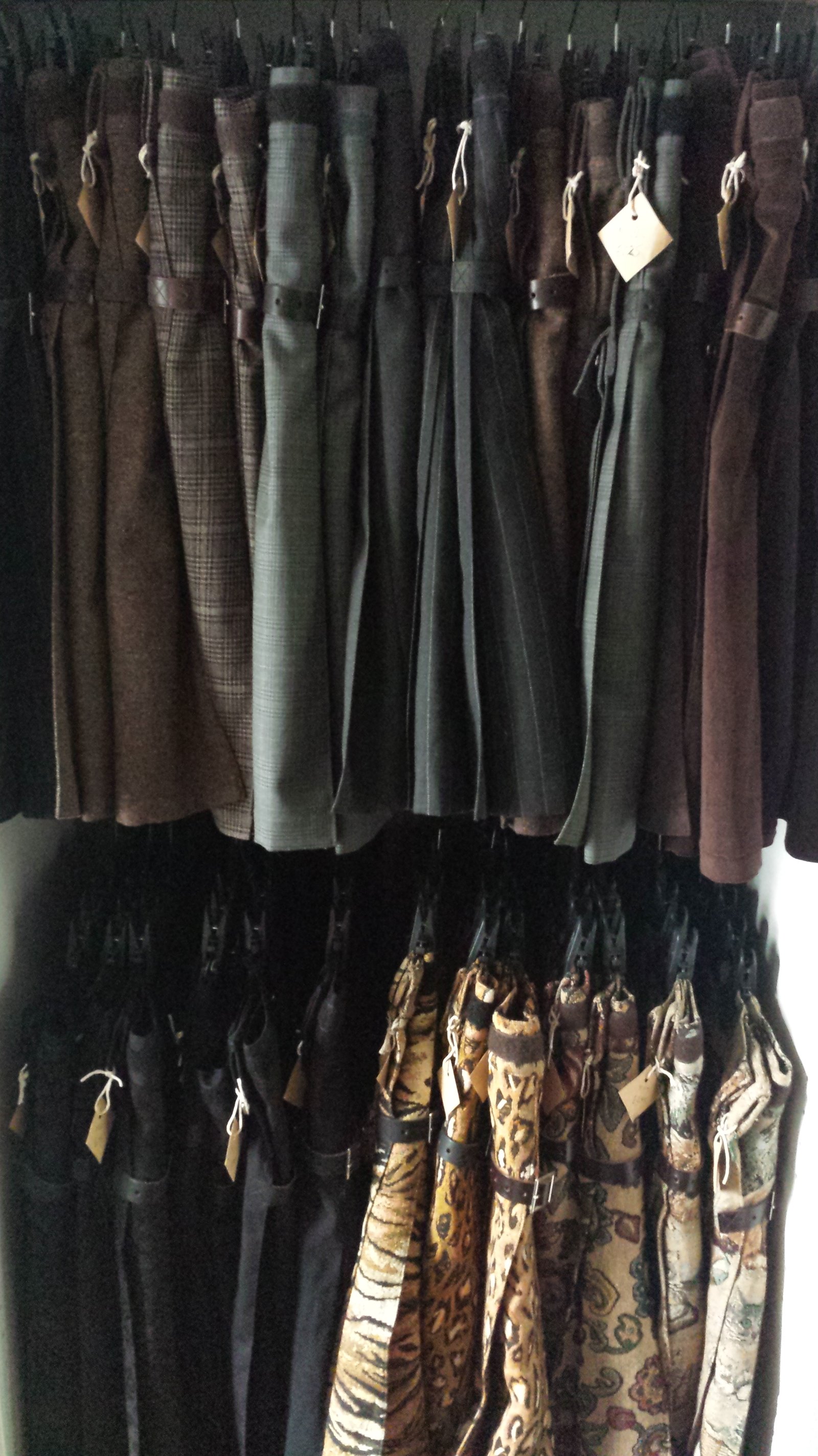From Braveheart’s era to the present day, the kilt has been synonymous with masculinity. But isn’t it just a skirt?
From Braveheart to the hard-drinking, ginger-haired Scots who cause a boozy ruckus at weddings, the kilt has long been synonymous with a rough-and-tumble sense of masculinity.
But change the fabric from tartan to a block colour and iron out the pleats and you have yourself a fetching knee-length skirt – an article of clothing the aforementioned filmic and social warriors wouldn’t be caught dead in.
While fashion designer Marc Jacobs has pioneered the idea of the male skirt by wearing them publicly on different occasions, it’s largely considered the by-product of eccentric creativity as opposed to a valid style choice, whereas the kilt, though carrying a different historical weight, is perfectly acceptable.
But what’s the big difference? Dr Mary Tomsic, lecturer in history and popular culture at The University of Melbourne, chalks it up to a gendered society.
“Clothing is practical, but also highly symbolic, so it is a key avenue through which gender is learned and encoded. One needs only to walk into a children’s clothing shop to clearly see how different girls and boys should be dressed … I see this as being restrictive for both boys and girls,” she said.
“There are a range of factors at play in determining the gender of clothing and these change over time in response to a range of factors: political movements like feminism and women’s liberation, cultural movements like glam rock, social and political needs like women wearing pants and work clothes during WWII, and commercial interests like companies identifying men as consumers, as per the metrosexual movement.”
Indeed, there have been moments in history when we’ve seen a blurring of gender lines. As Tomsic suggests, glam rock pioneers such as David Bowie and his spandex and makeup wearing cohorts showed men of the ’70s that sexual and gender ambiguity wasn’t to be feared but celebrated. But while the lavish stage costumes went on to influence such bands as Kiss, Culture Club and Mötley Crüe, it didn’t result in a broader knock-on effect because everyday consumers were still reluctant to buy clothes they saw as feminine.
“I think escaping the gender order is very difficult and strict gender codes can be restrictive for people in terms of expressing their sense of self … It shouldn’t matter at all – but it does – which tells us something about how society reads, understands and values women and men,” Tomsic said.
“I would like there to be less interest in coding clothes as belonging exclusively to either women or men. I can’t really see any benefits of coding clothes and fashion within a strict gendered regime.”
Though there is evidence that the tide is turning. Once considered a fringe item, male pantyhose – or mantyhose – have infiltrated the broader public sphere and now make up a small, yet noticeable, percentage of stocking sales. Executives from upscale Italian hosiery company Emilio Cavallini told The New York Times that since introducing a unisex line in 2009 they have seen sales steadily increase to a point where male customers are now an appreciable portion of their overall business.
It’s a trend that’s only going to gain steam as it becomes more accepted by the mainstream, says Chan Kraemer of mantyhose marketing website e-Mancipate.
“Fashion is always about exploring, about pushing the limits. That’s the natural way and critics are welcome,” he said.
“We are close to reaching the critical mass. And why not? Mantyhose are functional, they are basically unisex, simple to wear … they can replace socks, give different levels of warmth. I like that I can use the same trousers from fall to spring, only changing the thickness of the hosiery worn under. I mean it can greatly simplify the dressing process, which is very practical – and men do like practical things.”
Pantyhose weren’t always considered the sole domain of women. From the Middle Ages up until the 17th century, male hosiery was not only accepted but a common part of a man’s wardrobe. Even today, some segments of the male population continue to wear them, including athletes and those prone to poor circulation or varicose veins.
Though tights are more popular in Europe where they are generally thicker and feature designs considered more masculine such as skulls and checks, it’s difficult to imagine them taking off in Australia on account of our temperate climate and blokey culture. But that could all change according to Dr Tomsic, who says that shifts can occur with the right pioneers.
“Footballers have been wearing running tights for a while now … As we start seeing men, and in the case of AFL footballers, men who are understood as the bastions of masculinity wearing them, they become acceptable, and hence can possibly shift to other realms,” she said.
“When high-profile manly men wear such items they can have a significant influence with other men … For instance David Beckham in his sarong and nail polish had significant impact on trends, and what is then acceptable for more mainstream men to wear.”
While it remains to be seen if stockings will one day be viewed as completely genderless, there are signs that boundaries are slowly breaking down and marketers are starting to respond. Chan also likes to remind critics of one proudly masculine proponent of items traditionally associated with women.
“Hey guys, even Superman wears mantyhose,” he said.
via The clothes that make the man | smh.com.au.
DENIM – rough and tough as any pair of Levis I ever wore to work (but with the added advantage it will never wear out at the knees or pockets)
CORDUROY – same as above, but softer and cosy warm. If you’re off on a days hike down on the coast with your lunch and a hip flask you’d be an absolute idiot not to don one of these!








